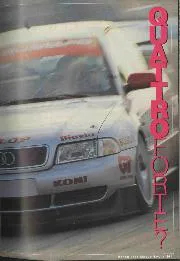
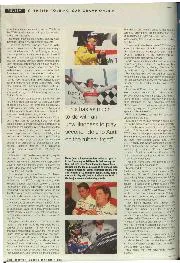
Quattroforte? Audi's 1996 BTCC arrival
There is a sense of foreboding in the BTCC. The arrival of Audi and its four-wheel drive A4 has the 'establishment' all of a twitter. The memory of the Ingolstadt…
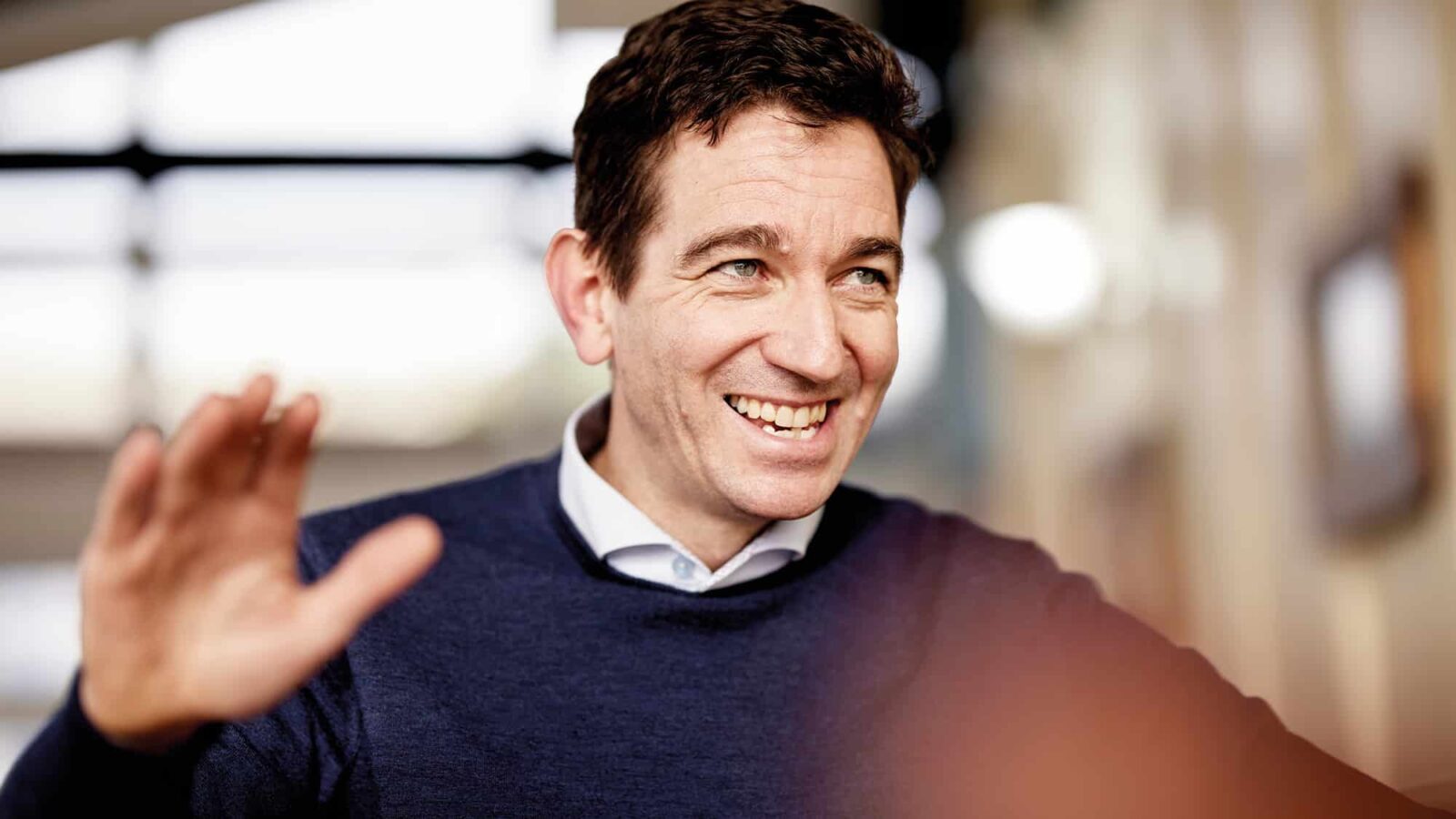
Richard Davies
Over more than 120 years of motor racing, many drivers have served long, rewarding careers. Few, though, have spent 19 consecutive seasons with the same front-running team. As Oliver Gavin approaches his 50th birthday, however, it is time for a fresh chapter. He hasn’t ruled out competing again in the future, but his days as a full-time racer are over as he focuses on a new initiative, the Oliver Gavin Driving Academy. Unsurprisingly, given the strength of the relationship he has built
up, he’ll be working with Corvette. His accomplishments with the manufacturer include five class wins at Le Mans, five in the Sebring 12 Hours (plus another with Saleen), success in the Daytona 24 Hours, 51 race victories and a clutch of championship titles.
To discuss his career and why he felt the time to stop had come, we meet at The Woodbine, an unspoilt pub in Waltham Abbey, Essex. The clientele seem curious – puzzled, even – that a fellow diner is having his portrait taken, but remain none the wiser. Despite his achievements Gavin is a long way from being a household name, even though he is one of the most decorated racers of modern times.
Motor Sport: Drivers have a habit of flitting from team to team. What was the secret for longevity between you and Corvette?
OG: “I think the timing was right when I joined. The Pratt & Miller/Corvette Racing team had been running for a few years, but was evolving – I think the whole operation had 30-35 people, so it was nothing like the beast it is now. It then quickly ramped up. I had a part-time role in 2002, my first year, and could see I was in a special spot when I went full-time the following season. There was a real sense of momentum.
“After three years you accept that you’ve been with the project quite a while; after five you think it’s quite something – then you get to 10 and start hoping that you’ll do a good enough job that your contract will be renewed!
“I think a lot of it is down to three core people who were there when I started – Gary Pratt, Doug Feehan and Doug Louth. I clicked well with them and they gave me responsibility, sort of being team captain and helping to bring on young drivers like Tommy Milner and Jordan Taylor when they came on board.”
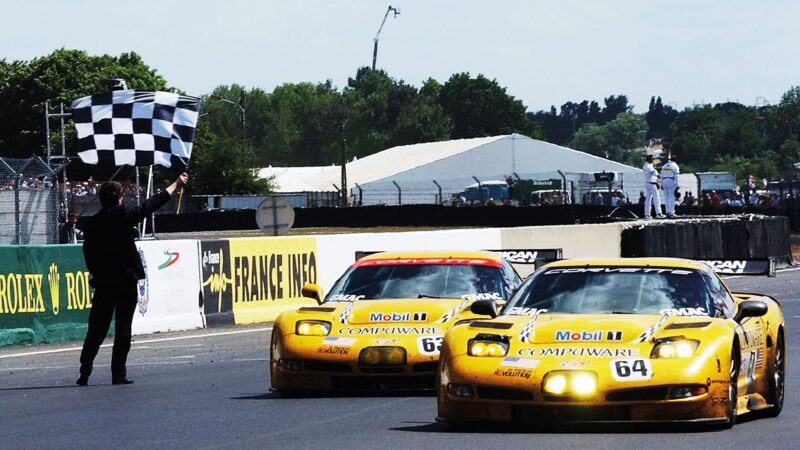
Class win at Le Mans in 2004 with a Corvette C5R (No64)
One assumes you didn’t have to do that with Jan Magnussen…
OG: “No! But Jan changed a lot during the time we raced together. I remember competing against him when he was with Ferrari and he still had a happy-go-lucky attitude, sort of chancing it a little and relying on raw skill and ability to pull out a performance – although he was brilliant at that. I hated qualifying against him because he was so good, but when he got the Corvette gig he realised he could have a long career with the team. He really began to focus and actually went to the gym… The two of us worked well together and I have very fond memories of racing with or against him – and sharing three Le Mans wins was really special.”
Was there a particular moment that made you decide it was time to stop?
OG: “Yes… I’d invested a lot in the new C8R that was coming on stream for 2020 and could see what a big step up it was going to be. Age wasn’t on my side at that stage, in my late 40s, but I had a strong race. Things were OK at Sebring and Atlanta, but this was through the early stages of the pandemic and I’d had to remain in the States, away from the family, which had started to overwhelm me.
“I was in a tough spot and a couple of things weren’t right. I was trying to make things work, but it wasn’t happening and I was starting to lose my rhythm in the car. It felt as though I could no longer put things together, where in the past it had always come so naturally. I was looking to the future, too, with my new driving academy, so it just felt as though I was coming towards the right time to stop. Then we got to Charlotte, for a race on the Roval in the rain…
“I took the start, but had done no testing there so was already on the back foot. And then an absolutely horrendous storm rolled in. I was just trying to hang on, the car was darting, aquaplaning all over the place, and it was also dark, so there were lights bouncing off every surface. I was struggling to see, just wanted not to crash and several times I was on the verge of heading in to the pits and saying, ‘Right, that’s it – I can no longer do this.’ I didn’t, but I knew that if I was thinking along those lines then I’d have to stop at some point – I couldn’t just keep going and going.”
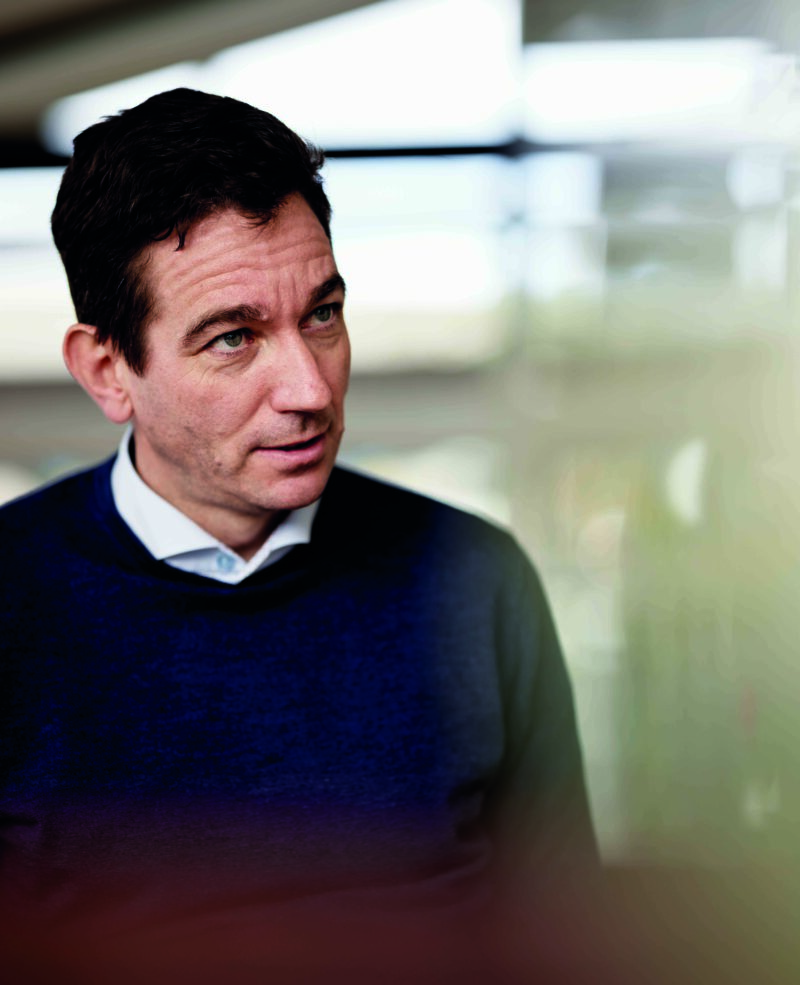
Not yet 50, Gavin thinks he might have another Le Mans left in him
Richard Davies
You joined Vasser Sullivan Racing to drive a Lexus GT3 at Daytona in 2021, then had your final race – to date, at least – when you drove for Corvette in the Spa WEC race later that season. Not a bad place to sign off…
OG: “No, but things still weren’t right. I was pretty close to Antonio [Garcia, his co-driver], but never as consistently quick as him – and five years earlier I knew that would not have been the case. After that, I knew I’d made the right decision. Will I race again? I’ll review that as and when it happens, but as of now I remain a retired driver. I was lucky that I had some control over it and was able to take the decision myself, rather than being told I should stop. The team was great about it – and also gave me support with setting up the driving academy.”
The organisers at Sebring arranged a special tribute bridge for your final event as a full-time member of the Corvette team, in 2020. That must have touched you.
OG: “To get into the track on race morning you had to go through all the Covid protocols. My wife Helen was with me and Antonio was in the back of the car. We could see the bridge from the Covid checkpoint and a banner that read ‘Oliver, thanks for the memories’. I pointed it out to Helen, who wondered whether it might be for me. Antonio just looked at the pair of us and said, ‘What do you think?’
“It’s probably the track where I have covered the most miles in my career. Corvette Racing would test there for three days every November and three every February, plus we had the 12-hour race and other test sessions. It’s rather flat, with no elevation changes, but when you spend so much time there you get to learn every bump – and it is bumpy – and every possible line. I absolutely love driving there, but a 12-hour race really wrings it out of you. There’s just something about the place.”
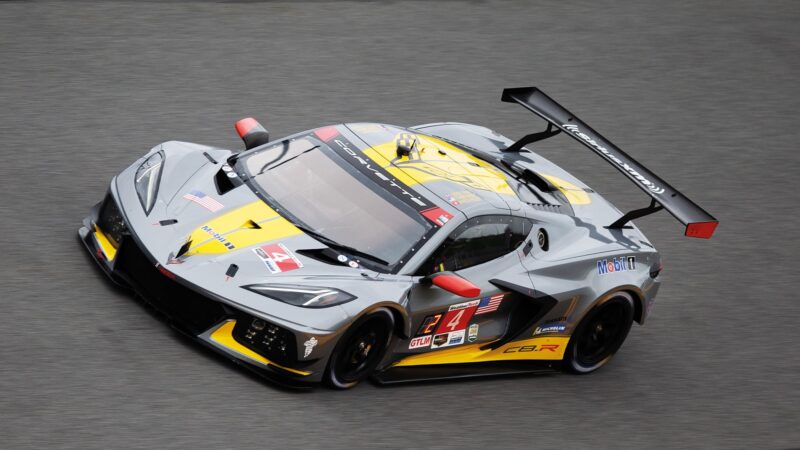
In the Corvette C8R, Daytona 24 Hours, 2020
It was also appropriate to end your full-time Corvette career there, because that’s where it all started.
OG: “Yeah, at the end of 2001 – and it remains incredibly fresh in the memory. Andy Pilgrim was there to set benchmark times – an expatriate Brit and an absolutely lovely guy who’d carved a good career in American sports car racing. He’d go out for 10-15 laps, set a time and then hand over to me. I’d head out, go a bit quicker, and this went on all day. I ended up being slightly faster – and also apparently gave appropriate feedback – so it went from there.
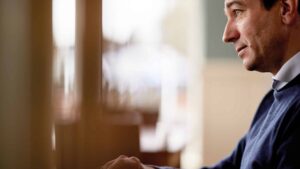
“I then had a conversation with Doug Feehan at Laguna Seca – and he said he had a contract ready for me, but first I had to test the car. Gary Pratt wouldn’t want me in his team until he’d seen me behind the wheel.”
That bit obviously went OK. Is it easy to pick out highlights from the seasons that followed?
OG: “Certainly the first Le Mans win [2002], with Ron [Fellows] and Johnny O’Connell, then battling with Aston Martin in 2006, when we clinched our third straight Le Mans victory – and that was as much about respect between the teams as the stuff happening out on track.
“Road Atlanta in 2010 was pretty cool. Jan and I were driving together and hadn’t won a race all season. Emmanuel Collard was with us that weekend, as third driver, and we were fighting Ferrari all race long, absolutely nip and tuck with never more than about three seconds covering the leaders.
“Emmanuel was in the car for a single stint in the middle of the race, for about 40 minutes, and almost crashed twice. So the engineers decided not to send him out again, left it to Jan and I – and it was my turn at the end. The fuel alarm was on for the final two laps and I was getting radio messages, telling me to get after the Ferrari ahead without using any fuel or tyres! I was sure it didn’t work like that.
“Coming on to the back straight for the final time, I was still worrying that I wouldn’t finish when I passed a Ferrari. It was all a blur and I didn’t catch the number, but when I crossed the line I could hear my engineer shouting, ‘We won, we won!’ and everyone going absolutely berserk in the background. The Ferrari had run dry with three corners to go, but that was such an intense way to register our first victory of the year – a 10-hour slog.
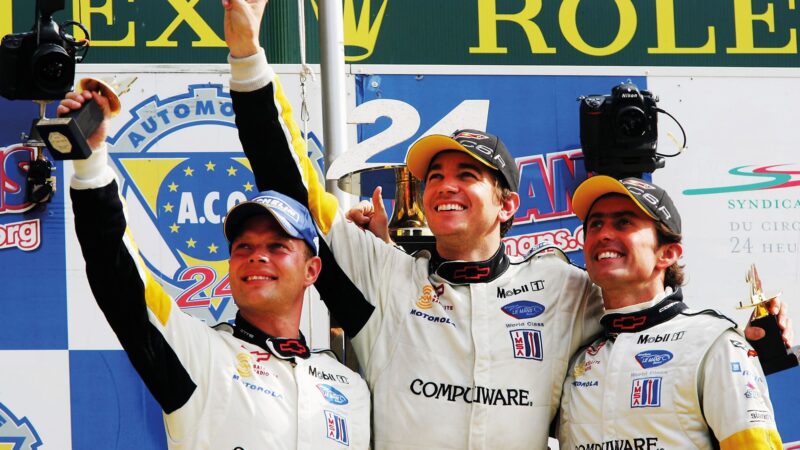
Oliver Gavin, centre, on the podium at Le Mans in 2006 with Jan Magnussen, left, and Olivier Beretta
“It’s brilliant to have driven at Le Mans so many times with some amazing team-mates, really spectacular talents. The 2016 Daytona 24 Hours stands out, too, with a 1-2 [class] finish. Antonio and I were close for the final 30 minutes, battling hard, and GM president Mark Reuss was on the pitwall so the pressure was unbelievable. I was racing one of my best mates, but also wanted to win. We are both ferociously competitive, but I did just enough – winning by 0.034sec. At Le Mans the following year, there were three photos of that duel in our hospitality area – almost like the moment was following Antonio around. He turned to me and said, ‘I hate those pictures.’ I replied that I quite liked them.
“I also really enjoyed working with Tommy Milner during the second phase of my Corvette career. He joined the team in 2011 and had a season with Olivier [Beretta], which was a bit up and down, so he and I paired up the following season. He’s a ferocious character and can be quite intimidating, so I thought I’d be feeling his wrath from time to time, but we started winning together and built a very good relationship over the next eight or nine years.
“My last class victory at Le Mans was very special, with Tommy and Jordan Taylor in 2015. The team was down to one car after Jan had an accident during practice, but Tommy seemed to be inspired. There wasn’t much between any of us in terms of pace, but he was the quickest guy in the car all weekend and did an awful lot to win us that race.
“Afterwards, it struck me that I hadn’t won Le Mans since before social media took hold – I was up there with two younger guys who were already sharing pictures and didn’t really know about life without Instagram!”
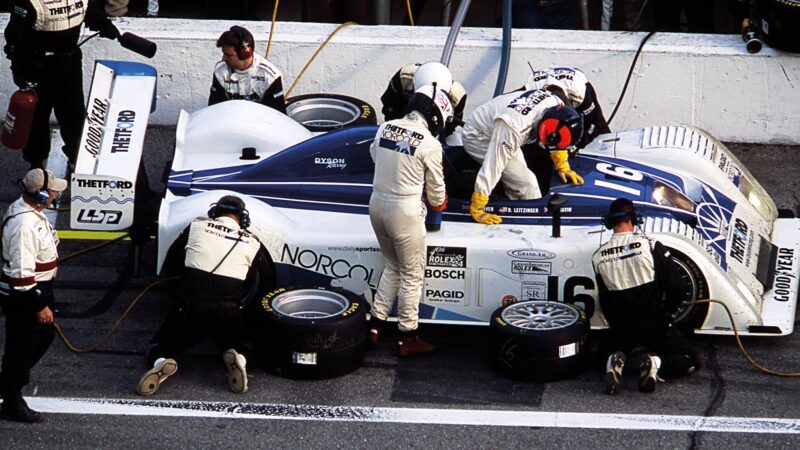
Pitting at the Daytona 24 Hours in 2002 racing a Riley & Scott for Dyson
Some drivers talk up Le Mans when they are still racing – but admit to being relieved about not having to go through it all again once they retire. I get the sense you relished it.
OG: “Absolutely. The magic and the mystique never wore off. When you win, there’s a winding staircase up to the podium room – and if you’re the finishing driver you’ll have parked at the far end of the pits, so by the time you reach the podium pretty much everyone else is already there. You see all these faces who have done so much to make victory possible. It’s just so emotional. If the chance came to do the race again, I would – even though I’ve seen some terrible things there. I was right behind Allen Simonsen when he crashed in 2013. I went past the scene for lap after lap, knowing it must be serious because the privacy screens were up, but
I didn’t know he’d died until after I’d finished my stint. I was sitting in the hospitality area and all our wives were there, looking at us
and wondering whether we were going to continue… That was a horrible weekend, dark and hollow, the worst side of Le Mans, but you have to carry on. That’s just what you do.”
Although you’ve retired from full-time competition, Corvette will still play a major part in your life through your role as a brand ambassador and also the new Oliver Gavin Driving Academy. What’s that all about?
OG: “There’s no racing element to it, initially at least. I’ll be teaching Corvette owners about performance driving and how to get the most from their cars, with driver training and track experience. It’s going to be based at the Bosch proving ground in Boxberg, Germany, although GM also uses a facility at the Nürburgring for some of its performance work and we’ll run out of that, too. Perhaps we’ll reach the stage where I’m teaching drivers up to the racing stage. We need to take baby steps.”
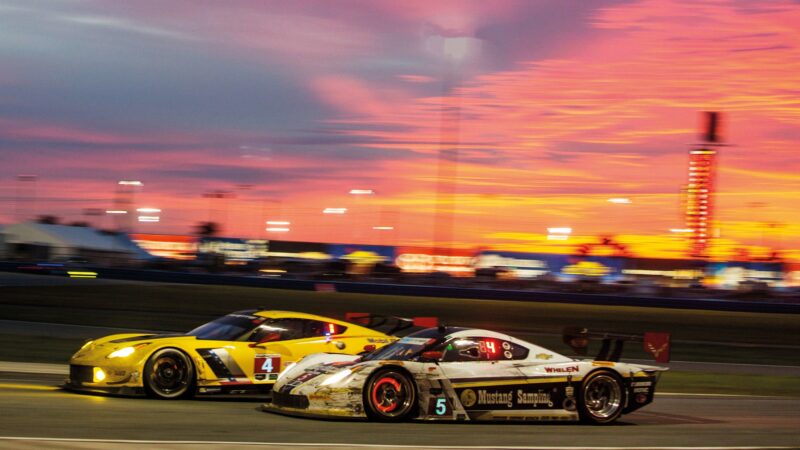
Corvette DP (No5) laps Gavin’s C7R at Daytona in 2016 – but there was a class win
Let’s rewind to the very start. I believe karting was something you did for fun with your dad and your brother.
OG: “That was the idea. I was a massive Ferrari fan – Gilles Villeneuve had been my hero – and Dad took us karting in 1983. Success proved elusive, though I did win a championship at Kimbolton and qualified on the front row for a Junior Britain round at the same track in the mid-1980s, although some bloke called David Coulthard spun and took me out in the final.”
Success wasn’t so elusive when you switched to cars. You won the Formula First title in 1991, qualified on pole when you made your Formula Renault debut that summer, took second place in the Formula Vauxhall Lotus series in ’92 and finished runner-up to Kelvin Burt in the following season’s British F3 Championship…
OG: “It did seem to feel natural – I got myself into a zone and everything just seemed to happen. In 1991, I stalled on the grid at Brands Hatch for one race – something that became a bit of a theme in my single-seater career – and collided with one of my Fortec team-mates when I was coming back through the field. It was the only race I didn’t finish during the year – but also the only one I didn’t win.
“I had a fantastic time with Edenbridge in 1993 and really gelled with Ian Morgan, one of the best race engineers I’ve worked with – it’s no surprise that he went on to have success in F1. Towards the end of the campaign, team owner Peter Briggs was urging me to stay in F3, that we could win the title the following year, but I was conscious of losing momentum because I’d stepped up a grade at the end of the previous two seasons and it seemed the right thing to do. And besides, I’d have been up against Jan Magnussen who won nearly all the races [14 from 18], so I’m not sure I would have been champion.”
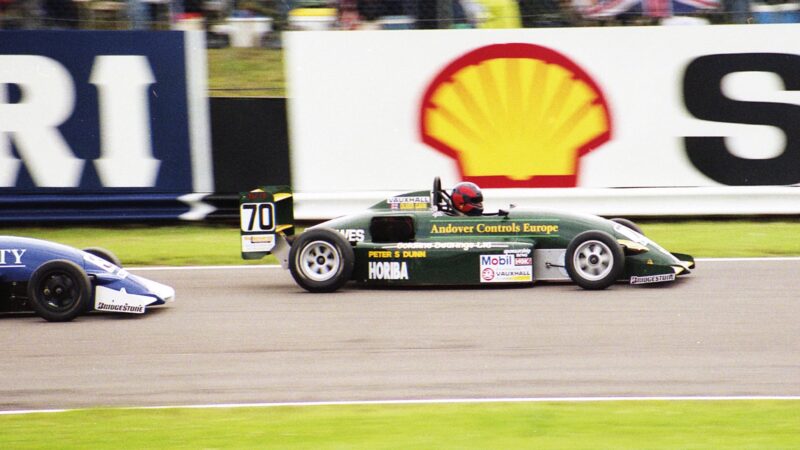
On the up: second place in the 1992 Formula Vauxhall Lotus series led to an F3 move
The step up to F3000 wasn’t exactly smooth, though, was it?
OG: “No. The idea was that I’d race with Pacific and be test driver for its new F1 team, but the money wasn’t there. I did only a handful of laps in the F1 car – with F1 suspension on one side and F3000 suspension on the other! – and raced for Omegaland in F3000, though the money for that ran out after the first four races. The phrase ‘character building’ tends to be overused, but 1994 was certainly that.
“The higher up the ladder you get, the more you see larger powers influencing things – and I was just this lad from north Bedfordshire, trying to make my way. You can be swallowed up super-quickly by that big monster, but I was really fortunate that Peter Briggs was happy to take me back for another crack at the F3 title in 1995. That was a really tough season against Hélio Castroneves, Ralph Firman, Warren Hughes and others, but third place in the Thruxton finale was enough to get me over the line – the only time in seven seasons that Paul Stewart Racing didn’t win the title.”
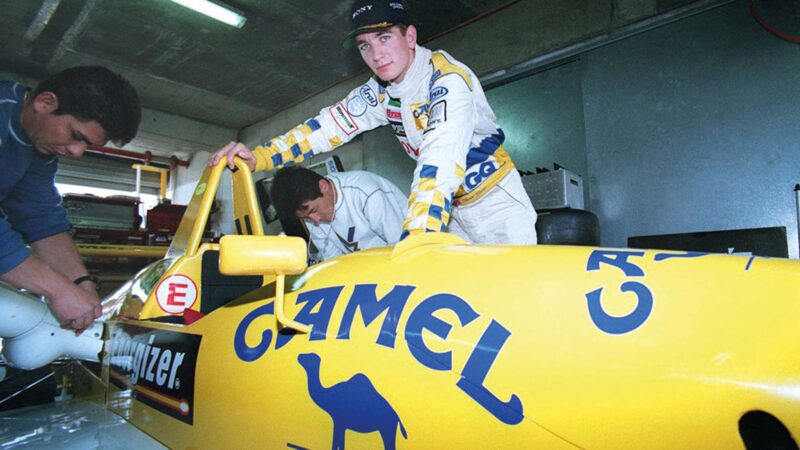
avin had two seasons racing in British F3, 1993 and ’95, taking the title in his final season. This is the Brit driver in the 1995 F3 Macau GP
And that led to your F1 debut… almost.
OG: “Ha! Yes, my F3 title qualified me for a superlicence – notionally, at least – and I was invited to drive for Pacific in Australia, the final race of the year. They were going to make up some story about regular driver Bertrand Gachot having injured himself in a jet-ski accident in Malaysia, or something like that. I’d already been interviewed by Murray Walker as Britain’s latest F1 driver when I saw Bertrand in the pit garage and it quickly became clear that I wouldn’t be driving. Pacific boss Keith Wiggins was telling me there had been a problem with the superlicence application because of time zones and so on.
“It was all a bit awkward, so in the end I went to see Bernie Ecclestone. I waited outside his office for two hours, but was eventually summoned in. He was absolutely charming, but pointed out that Pacific was going out of business, that I’d never driven at Adelaide, had never done a grand prix and hadn’t tested the 1995 car, so they couldn’t allow me to take part in those circumstances. It was hard to argue with any of that, but he said I’d be welcomed back with open arms in different circumstances.
“I then had to go to the airport to collect my dad. He’d flown all that way to watch his son make his grand prix debut – and the first thing he finds out when he lands is that I’m not taking part. I watched his subsequent argument with Keith Wiggins through the window of the hotel restaurant.”
In some ways, though, not driving for Pacific probably did you a favour.
OG: “It did, but I would like to have at least taken part, to feel what it was like to experience starting a grand prix – even if only the once.”
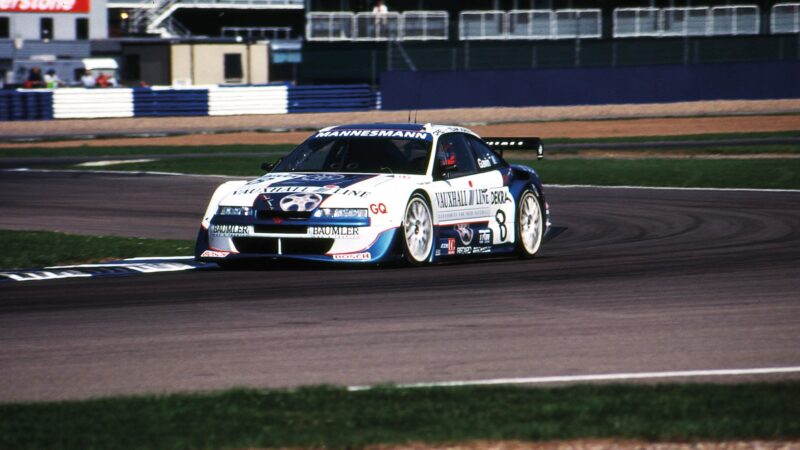
There was a spell in touring cars in 1996 with the works Opel Calibra V6
At which point you switched to saloons, with a works Opel Calibra drive in the International Touring Car Championship – a diversion.
OG: “I didn’t have the funds to return to F3000 and had built up a good relationship with Vauxhall’s motorsport operations manager Mike Nicholson, through using the firm’s engines in F3 and competing in Vauxhall Lotus before that. He was the conduit for that deal.
“My direct team-mate was Manuel Reuter – he was very experienced in that environment, while it was my first time with a big manufacturer team. At the third race of the year, in Estoril, I should have been running in the top six but a few things went wrong. When I walked into the paddock at the next event, I saw mechanics taking performance parts of my car to use as spares for Manuel, who was leading the championship. From that point on I think I was pretty much driving a donor car, but overall it was a great experience because I learned about the politics of driving for a big team and that served me well when I later went to Corvette. By that stage, I’d learned how to stand my ground.”
You made a brief return to F3000 at the start of 1997, again running on fresh air, but then had the opportunity to lead a few grands prix – albeit in a safety car.
OG: “Peter Briggs had tipped me off that F1 needed a new safety car driver, so I had a trial run with Charlie Whiting at Silverstone and they employed me to do selected races between then and the end of the season.
“It was actually quite useful having my face in the F1 paddock, so people knew I was still around. Just after I’d flown back from Suzuka I received a telephone call from Benetton test and development engineer Nigel Clyde, who wanted to know whether I could go to Silverstone the next day to drive 10 laps for the sake of a new sponsor, FedEx. Regular test driver Alex Wurz wasn’t around – he was still in Japan – and I was about the same height.
“Anyway, I did the 10 laps, which went pretty well, so they asked me to do another 10 – and then another. I ended up doing the whole day and they then asked me to come back the next day, too, but that this time they’d pay me, which seemed amazing. That was the beginning of a long and fruitful relationship and I ended up doing test work for them through until 2006, though it was a bit easier for me to drive a car set up for Alex Wurz than it was later on, when it was developed around Fernando Alonso. He’s quite a lot shorter than I am.”
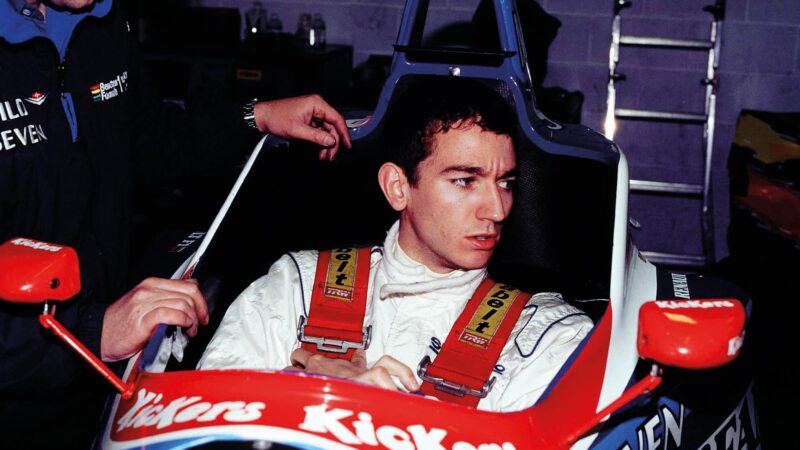
Gavin never got an F1 drive but was involved with testing for Benetton from 1997-2006
You had another stab at F3000 in 1999, this time back in your comfort zone at Edenbridge – or at least, that’s how it was when you signed. But Peter Briggs sold a stake in the team to future Minardi owner Paul Stoddart – and their partnership dissolved mid-season, with everything transferring to Paul’s workshops.
OG: “Paul had some good people, but they were new to F3000 and learning about the car as they went along. I got a fourth place in Monaco early in the year, but that was the only result of note. I think that’s when I realised I wasn’t going to have a future as a single-seater driver and needed something else.
“This is where the wheel began to turn full circle, because Keith Wiggins was by now Lola’s sales director in North America and I reckon he owed me a favour. He put me in touch with Scott Schubert, who was running a B2K/10 in the Grand-Am series. I was offered a seat in the Homestead race for $10,000. That amounted to about all Helen and I had in savings. She was pregnant at the time and said to me not long ago that she probably wouldn’t have agreed if she hadn’t been suffering ‘baby brain’.”
You set class pole, though the car was demoted to 19th on the grid for a technical infringement, and finished fourth overall. That opened a few doors, firstly with Intersport Racing and Jon Field, then with Saleen and ultimately Corvette.
OG: “Have I always made the right calls at the right moment? Absolutely not, but the timing of my voyage to America was perfect. And I have to say that the established British racers over there, like James Weaver and Andy Wallace, were a terrific help in teaching me about how the racing worked – as well as being excellent company over a beer and a curry.
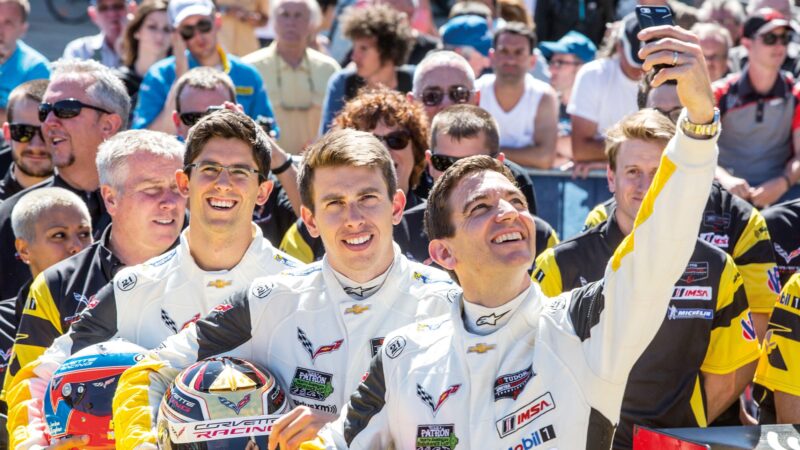
Time for a selfie at Le Mans in 2015. From left: Jordan Taylor, Tommy Milner and Gavin
“With hindsight, I was the right age to make the switch – teams over there wanted drivers who had some experience but who had also had most of their rough edges knocked out. When I joined Corvette in 2002, Ron Fellows said to me that I could have a long career with the team – but I don’t think either of us anticipated quite how long that might be!”
Any unfulfilled ambitions?
OG: “I was supposed to have driven for Corvette at Le Mans in 2021, before the team withdrew, and I guess I’d like to have a 20th start on my CV. It might also have been nice to have raced once or twice for outright victory, rather than simply class honours, but the GT division has always been monstrously competitive, with Corvette up against BMW, Ford, Ferrari, Porsche and Aston Martin at various times, all of them with incredibly strong driver line-ups. I have been super lucky.”